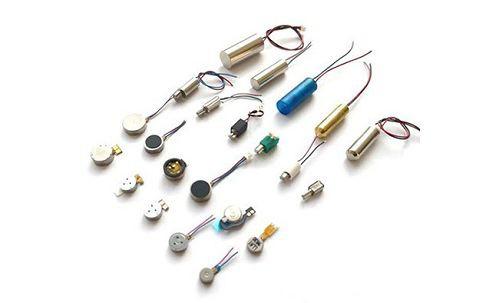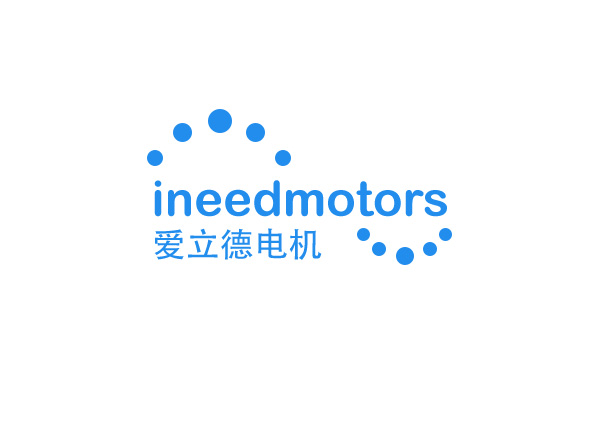Common Problems with 3 Volt Motors and Their Solutions
Using a 3 volt motor often comes with challenges like overheating, contamination, or power issues. These common problems can disrupt performance and lead to frustration. Identifying the root cause and applying effective solutions ensures smooth operation. INEED’s expertise and innovative vibration motor provide reliable tools to troubleshoot and maintain your motor efficiently.
Key Takeaways
Watch your 3-volt motor's heat to stop overheating. Keep it cool with good airflow and avoid overworking it.
Clean and check your motor often to keep out dust and water. Store it in a dry place and cover it for safety.
Test the voltage and power supply often. Use a multimeter to keep it running smoothly and avoid sudden breakdowns.
Common DC Motor Failures in 3 Volt Motors
Overheating in Brushed DC Motors
Overheating is one of the most common causes of motor failures in brushed DC motors. When the motor operates for extended periods or under heavy loads, the windings can heat up excessively. This overheating damages the insulation around the windings, leading to short circuits and eventual failure. To prevent this, you should monitor the motor's temperature during operation and avoid overloading it. Proper ventilation and cooling mechanisms can also help reduce overheating risks.
Low Resistance and Short Circuits
Low resistance in the windings often results from short circuits caused by damaged insulation. Common causes of motor failures like this include overheating, moisture, or contamination.
Short circuits in windings occur when insulation breaks down, allowing current to bypass its intended path.
Dust and dirt can accumulate, further degrading the insulation and causing electrical problems.
Moisture exposure accelerates insulation damage, leading to low resistance.
Regular cleaning and inspection of the motor can help you identify and address these issues early.
Contamination from Dust, Dirt, or Moisture
Contamination is a frequent contributor to electric motor problems. Dust and dirt can infiltrate the motor, clogging components and damaging windings. Moisture can corrode internal parts, leading to insulation breakdown and short circuits. To avoid these problems, store your motor in a clean, dry environment and use protective covers during operation.
Mechanical Failures in Motor Components
Mechanical failures, such as bearing failure or misaligned shafts, can disrupt the performance of brushed DC motors. Bearings may wear out due to friction, while misalignment can cause uneven stress on the motor. These issues often lead to overheating and loss of power. Regular lubrication and alignment checks can prevent such failures.
Voltage and Power Supply Issues
Voltage imbalances and power supply problems are common causes of motor failures. For instance, powering a 3 volt motor with 2xAA batteries can result in excessive current draw, especially if the motor is overloaded. Transient voltages or imbalances can also lead to insulation breakdown in the windings. Monitoring voltage levels with a voltmeter ensures stable operation and prevents unplanned downtime.
Troubleshooting 3 Volt Motor Problems
How to Fix Overheating in 3 Volt Motors
Overheating is a frequent issue in brushed DC motors. To address this, you should first reduce the motor's workload. Operating the motor within its recommended load capacity prevents excessive heat buildup. Ensure proper ventilation around the motor to allow heat dissipation. Adding cooling mechanisms, such as small fans or heat sinks, can further help regulate temperature. Regularly inspect the motor for signs of overheating, like discoloration or a burning smell, and take immediate action to prevent permanent damage.
Diagnosing and Resolving Low Resistance Issues
Low resistance often results from insulation breakdown in the windings. To resolve this, inspect the motor's windings for visible damage. Use a multimeter to measure resistance and identify any short circuits. If you detect low resistance, replace the damaged windings or consult a professional for repairs. Prevent future issues by keeping the motor clean and dry, as moisture and dust can accelerate insulation failure.
Cleaning and Preventing Contamination in Motors
Contamination from dust, dirt, or moisture can lead to motor failures. To keep your motor clean:
Lubricate bearings regularly to reduce friction and overheating.
Clean filters to maintain airflow and prevent dust buildup.
Store the motor in a dry, clean environment to avoid moisture damage.
Routine cleaning and inspections ensure the motor operates efficiently and reduces the risk of contamination-related problems.
Repairing Mechanical Failures in Brushed DC Motors
Mechanical failures, such as worn bearings or misaligned shafts, can disrupt motor performance. Regular inspections help you identify these issues early. Clean components to remove debris that may cause wear. Replace worn parts, such as bearings, to restore functionality. Reviewing the motor's service history and conducting functional tests ensures all components work as intended. Proper maintenance prevents costly repairs and keeps the motor running smoothly.
Ensuring Stable Voltage and Power Supply
A stable power supply is crucial for the reliable operation of a 3 volt motor. Start by verifying the power supply connections to ensure they are secure. Inspect the motor's wiring for damage or loose connections. Use a multimeter to test for continuity and check for broken windings. If the motor has overload protection, reset it if tripped. Examine the capacitor, if applicable, as a faulty capacitor can cause starting or running issues. Following these steps ensures the motor receives consistent power and avoids unexpected failures.
Preventive Maintenance for 3 Volt Motors
Regular Cleaning and Inspection of Motors
Regular cleaning and inspection are essential to prevent motor failure. Dust, dirt, and moisture can damage brushed DC motors, leading to common problems like overheating or short circuits. Inspections should occur at least every six months, but motors in harsh environments may require more frequent checks. Focus on cleaning filters to maintain airflow and cooling. Check electrical connections for tightness and integrity to avoid failures. Use tools like infrared thermography to detect overheating components. These practices ensure your motor operates efficiently and lasts longer.
Proper Storage to Avoid Contamination
Storing your 3 volt motor in a clean, dry environment prevents contamination. Dust and moisture can corrode internal parts, causing insulation breakdown and motor failure. Use protective covers during storage to shield the motor from environmental hazards. Proper storage minimizes the risk of contamination and ensures the motor remains in optimal condition.
Monitoring Voltage and Current Levels
Monitoring voltage and current levels is crucial for maintaining electric motor health. Use multimeters to measure voltage directly in circuits. Meggers and surge testing can help identify insulation issues and potential failures. Regularly checking voltage levels ensures stable operation and prevents motor burnout.
Lubricating Moving Parts in Brushed DC Motors
Lubrication reduces friction and wear in moving parts, extending the life of brushed DC motors. Follow the manufacturer’s guidelines for lubrication frequency. Over-lubrication can harm the motor, so apply the correct amount. Inspect bearings regularly for unusual sounds or resistance, as these may indicate the need for replacement. Routine maintenance like this helps prevent motor failure.
When to Seek Professional Help from INEED
If your motor shows signs of failure, such as overheating or unusual noises, consult INEED for expert assistance. Their team can diagnose issues and provide tailored solutions. INEED’s expertise ensures your motor operates efficiently and avoids costly repairs. Proactive measures like consulting professionals can prevent motor failure and extend its lifespan.
How INEED's Vibration Motor Can Enhance Motor Performance

Features of INEED's Vibration Motor
INEED's vibration motor stands out due to its advanced design and technical specifications. These motors are compact yet powerful, making them ideal for applications requiring precision and efficiency. For example, the IND-YZ0412H-002 model offers impressive features:
Specification | Value |
|---|---|
Motor Diameter | 4mm |
Motor Body | 8mm |
Rated Voltage | 3V |
Rated Speed | 11,000±2,500 RPM |
Rated Current | 75 mA Max |
Starting Voltage | 1.7V DC Max |
Stall Current | 105 mA Max |
Terminal Resistance | 36 Ω (±20%) |
These specifications ensure reliable performance, even in demanding conditions. The motor's quick response time and low power consumption make it a perfect fit for devices operating at 3 volts. By using dedicated driver chips, INEED's LRA vibration motors achieve precise voltage and frequency control, enhancing overall performance and reducing performance dips.
Customization Options for Specific Applications
INEED offers extensive customization options to meet diverse application needs. You can tailor the motor's size, voltage, and vibration strength to suit specific devices.
Customization Option | Description | Applications |
|---|---|---|
Size | Tailored to fit specific device dimensions | Compact wearables, industrial tools |
Voltage | Adjustable to meet power requirements | Various electronic devices |
Vibration Strength | Customizable to achieve desired feedback | Wearables, gaming devices, industrial applications |
These options allow you to optimize the motor for unique requirements, ensuring seamless integration and enhanced functionality. Whether you need a motor for a wearable device or an industrial tool, INEED's customization ensures the perfect fit.
Benefits of Using INEED's Vibration Motor in Troubleshooting
INEED's vibration motors provide several advantages over traditional troubleshooting methods. Linear Resonant Actuators (LRAs) offer stable and energy-efficient vibrations, operating at a resonant frequency to ensure consistent performance. They consume less power while delivering quick response times of around 20 milliseconds, which is crucial for user interaction in devices like smartphones and wearables.
Additionally, these motors boast a long lifespan, often exceeding one million cycles. This durability reduces the need for frequent replacements, saving you time and resources. By integrating INEED's vibration motors, you can address common motor issues effectively, ensuring reliable performance and minimizing downtime.
Addressing common 3-volt motor issues ensures reliable performance and prevents costly repairs. Regular maintenance plays a vital role in extending motor lifespan. Studies show that preventive measures, like lubrication and alignment checks, reduce failure rates and improve efficiency. INEED’s expertise and innovative products, such as vibration motors, provide tailored solutions to enhance motor performance and simplify maintenance.
FAQ
What is the most common cause of motor overheating?
Overloading the motor is the primary cause of overheating. Operating it beyond its capacity generates excessive heat, damaging internal components.
How often should you inspect a 3 volt motor?
Inspect your motor every six months. For motors in harsh environments, increase the frequency to prevent contamination and mechanical failures.
Can you customize a motor for specific applications?
Yes, customization options include size, voltage, and vibration strength. These adjustments ensure the motor meets your device's unique requirements.
See Also
Understanding 3V Motors: Key Applications And Selection Tips
Uncover The Mechanism Behind 3V DC Motor Vibrations
A Comparison Of Brushed Versus Brushless 3 Volt Motors
Investigating Vibration Motor Uses Across Various Industries
LRA Vibration Motors: Key Elements For Haptic Feedback Technology
Get Custom Micro DC Motors from
INEED Motors!
Leading Brand in Vibration Motor Manufacturing Industry
